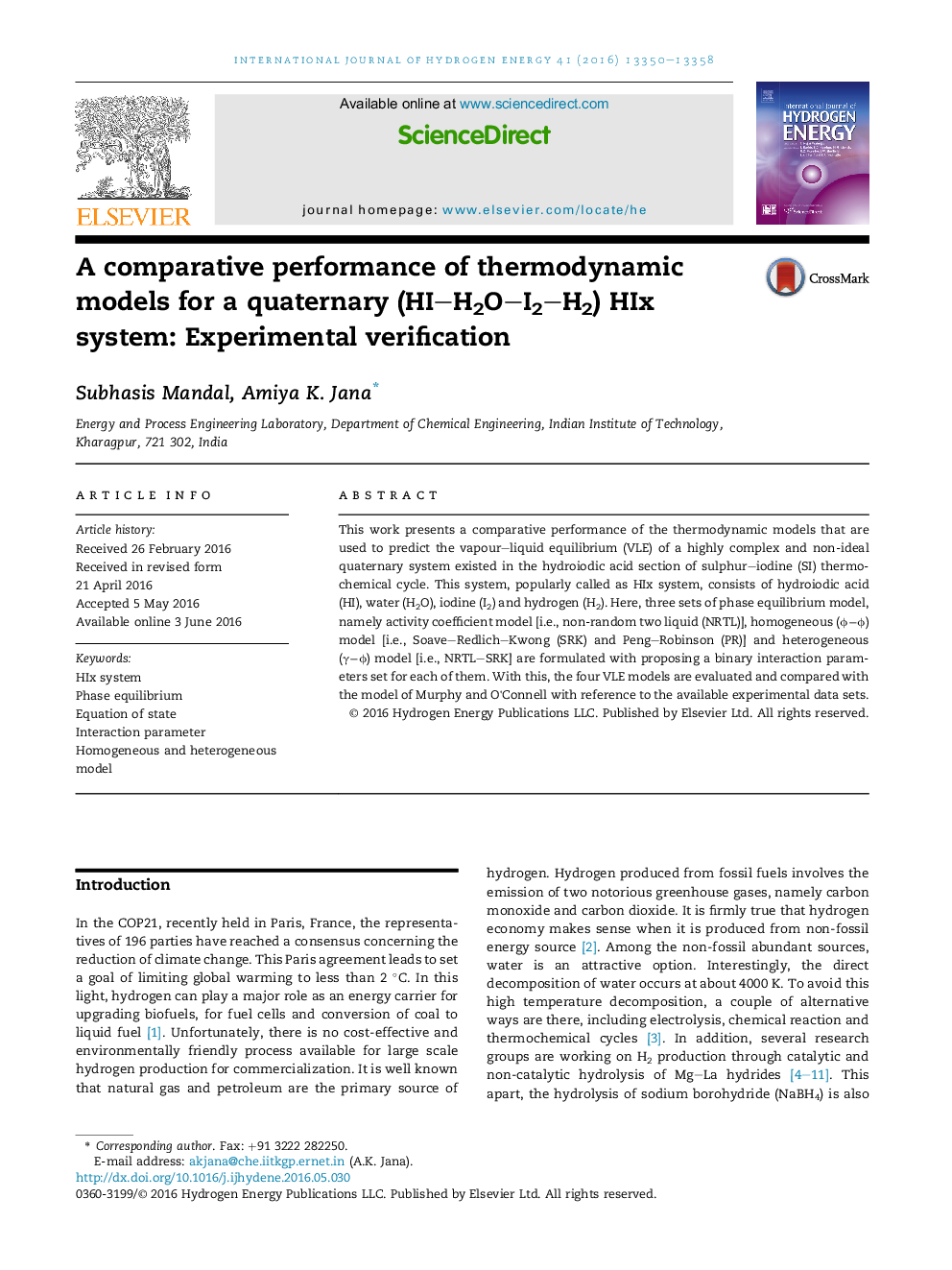| Article ID | Journal | Published Year | Pages | File Type |
|---|---|---|---|---|
| 1276448 | International Journal of Hydrogen Energy | 2016 | 9 Pages |
•Four phase equilibrium models developed for HIx system.•Both homogeneous (ϕ−ϕ) and heterogeneous (γ−ϕ) approaches used.•Experimental data sets used to validate the models.•Further evaluated comparing with a recent model of Murphy and O'Connell.
This work presents a comparative performance of the thermodynamic models that are used to predict the vapour–liquid equilibrium (VLE) of a highly complex and non-ideal quaternary system existed in the hydroiodic acid section of sulphur–iodine (SI) thermochemical cycle. This system, popularly called as HIx system, consists of hydroiodic acid (HI), water (H2O), iodine (I2) and hydrogen (H2). Here, three sets of phase equilibrium model, namely activity coefficient model [i.e., non-random two liquid (NRTL)], homogeneous (ϕ−ϕ) model [i.e., Soave–Redlich–Kwong (SRK) and Peng–Robinson (PR)] and heterogeneous (γ−ϕ) model [i.e., NRTL–SRK] are formulated with proposing a binary interaction parameters set for each of them. With this, the four VLE models are evaluated and compared with the model of Murphy and O'Connell with reference to the available experimental data sets.
